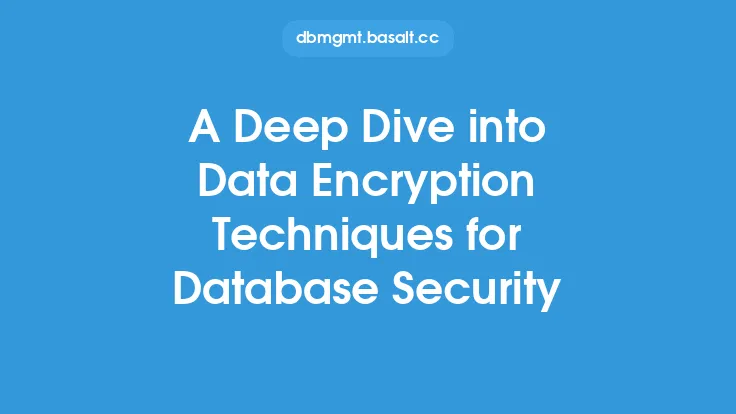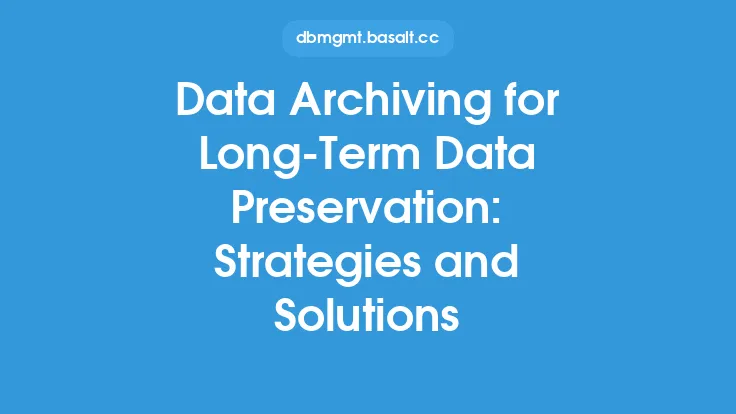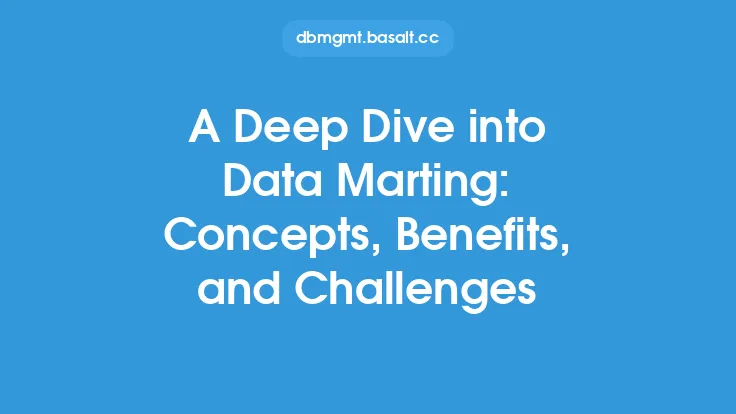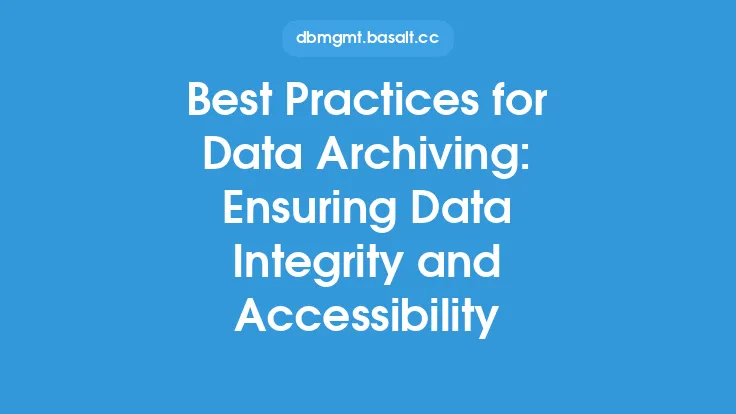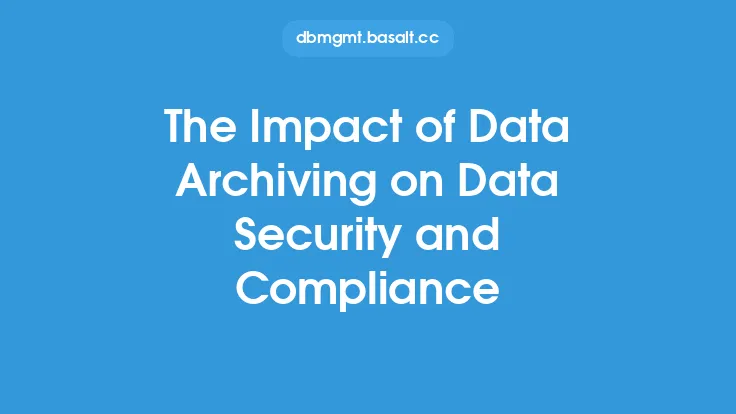Data archiving is a critical process in database management that involves storing data in a way that makes it easily accessible and retrievable for future use. One of the key aspects of data archiving is the use of various techniques to ensure that data is stored efficiently and securely. In this article, we will delve into the world of data archiving techniques, exploring the different methods used to compress, encrypt, and store data.
Introduction to Data Archiving Techniques
Data archiving techniques are designed to help organizations manage their data more effectively, reducing storage costs and improving data accessibility. These techniques can be broadly categorized into three main areas: compression, encryption, and storage. Compression techniques are used to reduce the size of data, making it easier to store and transmit. Encryption techniques are used to protect data from unauthorized access, ensuring that sensitive information remains confidential. Storage techniques, on the other hand, refer to the methods used to store archived data, such as tape, disk, or cloud storage.
Compression Techniques
Compression is an essential technique in data archiving, as it helps reduce the size of data, making it easier to store and transmit. There are several compression algorithms available, each with its own strengths and weaknesses. Some of the most common compression algorithms used in data archiving include gzip, zip, and lzma. Gzip is a popular compression algorithm that uses a combination of Huffman coding and LZ77 compression to reduce the size of data. Zip, on the other hand, uses a combination of compression algorithms, including deflate and LZ77, to compress data. Lzma is a more advanced compression algorithm that uses a combination of LZ77 and Huffman coding to achieve high compression ratios.
Encryption Techniques
Encryption is another critical technique in data archiving, as it helps protect sensitive information from unauthorized access. There are several encryption algorithms available, each with its own level of security and complexity. Some of the most common encryption algorithms used in data archiving include AES, RSA, and Blowfish. AES (Advanced Encryption Standard) is a widely used encryption algorithm that uses a symmetric key to encrypt and decrypt data. RSA (Rivest-Shamir-Adleman) is an asymmetric encryption algorithm that uses a pair of keys, one public and one private, to encrypt and decrypt data. Blowfish is a symmetric encryption algorithm that uses a variable-length key to encrypt and decrypt data.
Storage Techniques
Storage techniques refer to the methods used to store archived data. There are several storage options available, each with its own advantages and disadvantages. Some of the most common storage options used in data archiving include tape, disk, and cloud storage. Tape storage is a traditional method of storing data, using magnetic tape to store data. Disk storage, on the other hand, uses hard disk drives or solid-state drives to store data. Cloud storage is a more modern method of storing data, using remote servers to store and manage data.
Data Archiving Formats
Data archiving formats refer to the file formats used to store archived data. There are several data archiving formats available, each with its own advantages and disadvantages. Some of the most common data archiving formats include tar, zip, and rar. Tar (Tape Archive) is a widely used data archiving format that uses a combination of compression and archiving to store data. Zip is a popular data archiving format that uses a combination of compression and encryption to store data. Rar (Roshal ARchive) is a data archiving format that uses a combination of compression and encryption to store data.
Data Archiving Software
Data archiving software refers to the tools and applications used to manage and store archived data. There are several data archiving software options available, each with its own features and functionalities. Some of the most common data archiving software options include Veritas NetBackup, IBM Spectrum Archive, and Oracle Secure Backup. Veritas NetBackup is a widely used data archiving software that provides a range of features, including compression, encryption, and storage management. IBM Spectrum Archive is a data archiving software that provides a range of features, including compression, encryption, and cloud storage integration. Oracle Secure Backup is a data archiving software that provides a range of features, including compression, encryption, and storage management.
Best Practices for Data Archiving
Data archiving is a critical process that requires careful planning and execution. There are several best practices that organizations can follow to ensure that their data archiving processes are effective and efficient. Some of the most important best practices include developing a data archiving strategy, selecting the right data archiving software, and ensuring data integrity and accessibility. Developing a data archiving strategy involves identifying the types of data to be archived, determining the storage requirements, and selecting the right data archiving software. Selecting the right data archiving software involves evaluating the features and functionalities of different software options and choosing the one that best meets the organization's needs. Ensuring data integrity and accessibility involves implementing measures to protect data from corruption, loss, or unauthorized access.
Conclusion
Data archiving techniques are essential for organizations that need to store and manage large amounts of data. Compression, encryption, and storage techniques are all critical components of data archiving, and organizations must carefully evaluate their options to ensure that their data is stored efficiently and securely. By following best practices and using the right data archiving software, organizations can ensure that their data archiving processes are effective and efficient, and that their data is protected and accessible for future use. Whether an organization is using tape, disk, or cloud storage, data archiving techniques can help reduce storage costs, improve data accessibility, and ensure that sensitive information remains confidential.
